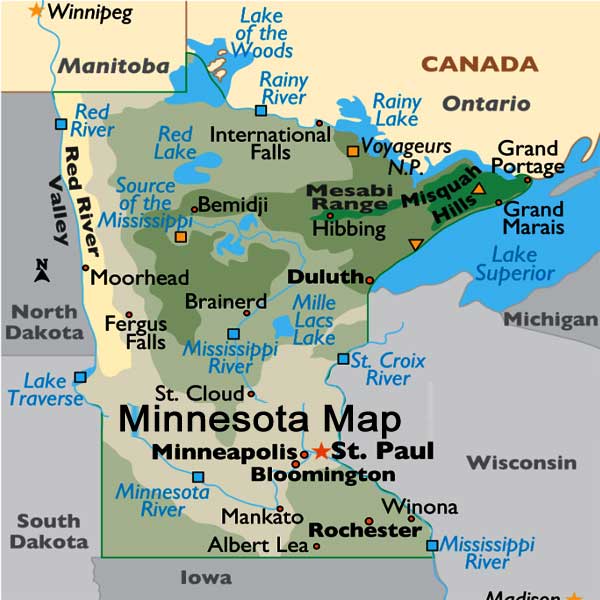Exploring the geography, cities, and attractions of minnesota.

Map of Minnesota
Each region of Minnesota
offers adventure, culture and curiosity. City lovers will find daily
events and world-class museums in the Minneapolis-St. Paul area; nature
buffs will want to explore the North Shore, northwest and central lakes
regions; and small-town charm is the hallmark of southern Minnesota
Minnesota State map
Minnesota map USA
Map to Minnesota
Minnesota map US
Minnesota Mn map
Mn on US map
Minnesota map
Geographical overview of minnesota.
The geographic regions
discussed here have combined elements from several of these various criteria
to divide the state into areas recognized by the typical Minnesotan.
Disagreements concerning the exact boundaries are to be expected, however,
the exact boundary definitions are not necessary to adequately define the
state's regions. Large areas of the state are sometimes referred to
historically and politically as Southern Minnesota or Northern Minnesota to
refer to areas outside of the Twin Cities Metropolitan area but stretch
across multiple regions due to climate, agriculture, political views, school
systems and other relations

Minnesota State map
Minnesota map USA
Map to Minnesota
Minnesota map US
Minnesota Mn map
Mn on US map
Map of Minnesota USA
Overview of minnesota and its
geography.
Minnesota is bordered by
Canada in the north, Lake Superior and Wisconsin in the east, Iowa in the
south, and North and South Dakota in the west. Most of the state’s
topography (or the shape of the terrain) was created thousands of years ago
by glaciers. These slow-moving masses of ice carved out the Minnesota’s
plains and low hills. They also created the state’s many lakes
Minnesota State map
Minnesota map USA
Map to Minnesota
Minnesota map US
Minnesota Mn map
Mn on US map
|












